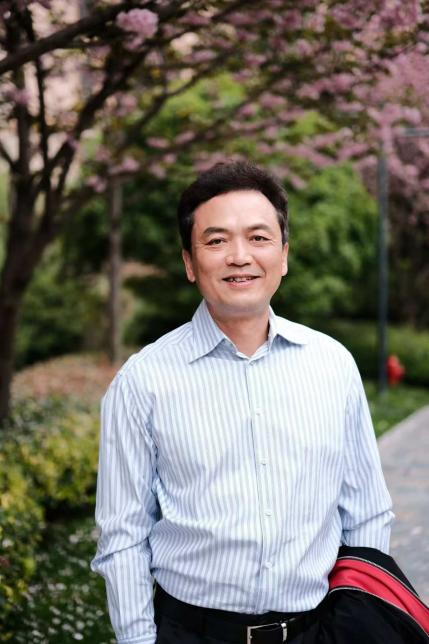"Top stream" Qiu Dongrong's latest position is out! Bought gold stocks and others in the first quarter, pay attention to three main directions in the future.
2024-04-16 21:26
As of the end of the first quarter, the total assets under the five products owned by Qiu Dongrong amounted to 19.854 billion yuan, which is a decrease of 3.928 billion yuan compared to the end of last year.
Entering the third week of April, mainland public mutual funds began to disclose their first-quarter reports one after another. On April 16, the renowned fund manager Qiu Dongrong's products disclosed their first-quarter report. According to statistics, as of the end of the first quarter, the total assets under management of Qiu Dongrong's 5 products were 19.854 billion yuan, which is a decrease of 3.928 billion yuan from the 23.782 billion yuan at the end of last year.
All 5 products managed by Qiu Dongrong saw a decrease in their scale. Among them, Zhonggeng Value Leading lost 6.08 billion shares due to net redemptions and a 4.16% net asset value decline in the fourth quarter, resulting in a decrease in scale of 1.63 billion yuan. The second largest scale, Zhonggeng Small Cap Value, lost 4.49 billion shares due to net redemptions and a 5.36% net asset value decline in the fourth quarter, resulting in a decrease in scale of 1.269 billion yuan. Zhonggeng Dynamic Flexible Allocation, Zhonggeng Value Quality Held for One Year, and Zhonggeng Hong Kong Stock Connect Value, which are respectively closed for 18 months, saw decreases in scale of 325 million yuan, 488 million yuan, and 216 million yuan.
Looking at Qiu Dongrong's longest-held Zhonggeng Value Leading Mixed Fund, the first quarter mainly involved reducing holdings of stocks such as Xpeng Motors-W (09868), with Geely Auto (002241.SZ) and Shenhuo Stock (000933.SZ) exiting the top ten holdings, and Kuaishou-W (01024) and Meituan-W (03690) entering the top ten. Worth noting is that as of April 15, 2024, the stock of Shenhuo, which has risen more than 50% this year, was sold off in the first quarter.
In addition, among the other funds managed by Qiu Dongrong, another fund with significant changes was Zhonggeng Dynamic Flexible Allocation. The biggest change in the fund in the first quarter was the replacement of four top-holding stocks. Among them, Hunan Gold (002155.SZ), Changchun High-tech (000661.SZ), Runfeng Stock (301035.SZ), and Huatong Stock entered the top ten, while Crystal Optoelectronics (002273.SZ), Shanghai Hanxun (300762.SZ), Kayin Technology (688687.SH), and Kanghua Biological (300841.SZ) exited the top ten.
Additionally, in the top ten holdings of Zhonggeng Hong Kong Stock Connect Value, which is closed for 18 months, the main change was the reduction of holdings in stocks such as SinoPharm (06600), with Kuaishou-W and AAC Technologies (02018) entering the top ten. Zhonggeng Value Quality Held for One Year reduced holdings in Xpeng Motors-W, while Meituan-W and China Merchants Energy Shipping (01138) entered the top ten.
In the first quarter of 2024, Qiu Dongrong's adjustments to his top holdings were primarily in the form of increasing holdings, as stated in his quarterly report. He believes that equity assets have high implied returns, corresponding to strategic opportunities, and therefore should actively allocate to equity assets.
Low valuation levels with high risk compensation are not applicable to all assets. In his view, it is important to focus on structure and prefer companies that meet the characteristics of "supply being tight, demand shifting to new, low valuation, high-profit growth or elasticity." Broadly speaking, opportunities are distributed for investing in companies that are expected to achieve high growth and elasticity in the next phase of fundamental improvement. Companies that were once considered dreams and stories, but are now showing great potential and have a bright future, deserve more attention.
Furthermore, Qiu Dongrong also values long-term investment strategies such as high dividend yield strategies. He believes that high-dividend strategies have a tendency towards negative returns in the long term and are not necessarily low-risk strategies. In investment, fundamental factors and pricing are more important. The high returns from high-dividend strategies are likely to come from the accumulation of other factors, but investors tend to reinforce successful strategies, prefer linear trading, and overlook the ongoing accumulation of substantial risks such as cycles, growth, capital supply, or innovation, which may challenge the stability of high dividend yields.
In terms of future investment strategies, Qiu Dongrong continues to adhere to low valuation value investment strategies. In his view, the most important factor determining capital return is not demand, but supply, and the competitive landscape determined by the supply structure, whether it be the tight supply constraints of traditional industries or the supply creating demand of emerging technologies. Qiu Dongrong hopes to fulfill three requirements:
1. Supply contraction, continuous optimization of the landscape, preferably with supply driving demand;
2. Demand risks are fully released or have ample room for growth, ideally fast growth or sustained high growth;
3. Fundamental risks of individual stocks are released, the landscape is becoming clearer, competitive advantages are prominent, and high-quality companies with two characteristics (high growth and high elasticity of profits) are emphasized.
At the same time, Qiu Dongrong also listed key investment directions to focus on in his quarterly report, including:
1. Pharmaceutical, internet, and smart electric vehicle technology stocks with strong business growth attributes and significant future space for growth.
2. Value stocks with shrinking or rigid supply, high growth potential or profit elasticity, mainly in industries such as basic metals represented by resource companies, energy transport companies, and real estate.
3. Companies with high value for money and a combination of demand growth space and competitive supply advantages, mainly in industries such as machinery, electronics, pharmaceutical manufacturing, power equipment and new energy, and agriculture, forestry, animal husbandry, and fishery.
Qiu Dongrong pointed out that AI is leading the innovation cycle, and the explosion of products and applications is imminent. Market expectations are low due to insufficient pricing, focusing on part of the growth stocks in industries such as machinery and electronics. He believes that there is still much to be explored in finding high-value companies in the broad manufacturing sector. For example, as the penetration rate and value of manufacturing sectors such as industrial automation and instruments and meters increase, values will rise. In sectors such as lithium batteries and automotive, the competition landscape is becoming clearer, with leading companies that possess global competitive cost and technological advantages in high-end manufacturing segments.
Overall, Qiu Dongrong emphasizes the importance of maintaining a low valuation value investment strategy, focusing on companies that meet specific criteria and have strong growth potential in various sectors.Externally, the prolonged losses in the industry have led to a substantial reduction in production capacity, with some companies in the animal protein sector showing high growth potential and high profit elasticity.Je m'appelle Marie.
RECOMMEND

Advanced investment education | FATCA & CRS leading global tax transparency, who is most affected?
04/08/2025

34 年股市老兵“曾阿牛”:跑赢纳指 110%仍不满足!从第一代股评家到对冲基金管理人的经历
14/06/2025

The first closed door meeting of the New Intelligence Roundtable Faction and the US Dollar Foundation was successfully held in Shanghai
01/05/2025
Customer Service

Add the WeCom

